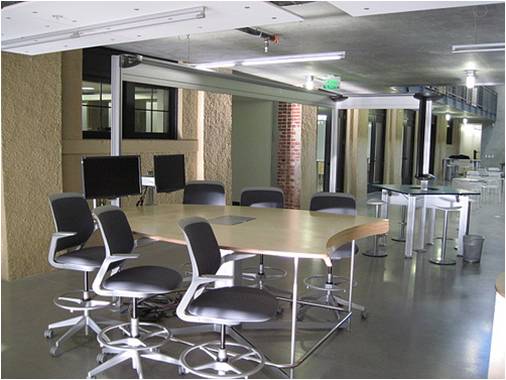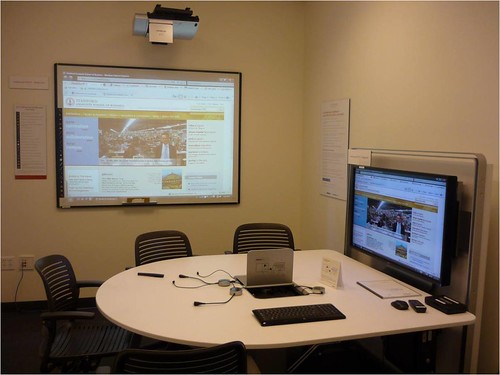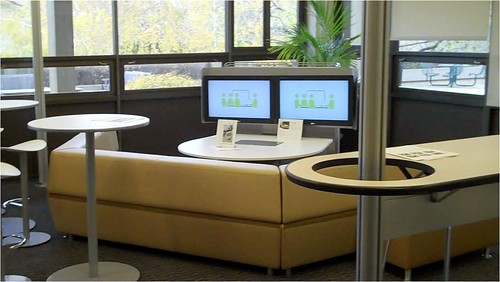Recently, One Workplace had the opportunity to be a part of an exciting project at Stanford's Graduate School of Business (GSB). According to Mike Drez, "as Stanford was creating the GSB of the future, they were focused on how to help the student teams collaborate. Collaboration amongst student teams is a real hallmark of the GSB and they wanted to create collaboration rooms that could enhance the rooms that would then enhance the experience."
The GSB team asked Mike and Sandy Kowalchik to review interactive board solutions with them. After an onsite meeting with the team, an opportunity presented itself to add media:scape with eno to a mock collaborative space in the GSB MBA Lab.
Design concepts were reviewed and GSB decided to move ahead with the media:scape mock-up with eno integrated. A live and ongoing mock-up of the solution was implemented, and RoomWizard was added soon after the space went live.
The solution did require some attending to, and Sandy K. spent entire days onsite coaching students on how they could take advantage of the solutions provided in the mock-up. word quickly spread within the GSB MBA student body, and things have been buzzing since!
The mock-up space has been booked 24/7 for close one year now! We requested timing to pull the mock-up out, but the GSB team asked that we please do not uninstall the solution until they are completely moved into their new campus. How could we say no.
How did this impact decisions for their new campus? They decided to change long existing plans for more traditional AV solutions to media:scape in (26) spaces including student group project rooms, faculty meeting rooms, and traditional conference rooms!
Phase one of the overall project installed in December 2010, and phase two is installing March 2011. Thanks to the help and technical expertise of Sandy Kowalchik, this project was installed quickly and seamlessly.
Where do we go from here? Buzz from very high levels within GSB say that they should plan for media:scape to be in all rooms!
No question that the ease of information sharing allows for deeper and faster collaboration to occur in these student team-intensive environments.




